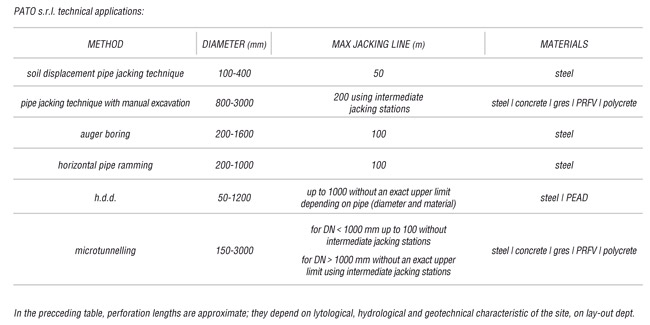TRENCHLESS TECHNOLOGIES
Digging open-cut trenches with natural (water flows, lakes, crests) or man-made (railways, urban roads and highways, buildings and natural and cultural protected areas) obstacles in the way has always been a major concern for engineers.
This has made a major contribution to the development and diffusion of the so-called no-dig or trenchless technologies, which are techniques that allow underground installation of pipes and utilities with little or no breaking of the surface.
Trenchless technologies have considerable advantages over conventional open-cut excavations, including:
– no (or very little) interruption to road, railway or river traffic flows;
– lower excavation volumes;
– reduced road occupancy;
– optimized installation paths regardless of surface obstacles;
– unlimited depth of the drilling line;
– lower restoration and maintenance costs;
– rapid installation and high production levels;
– minimal environmental impact and social costs.
Trenchless technologies include all underground construction methods that eliminate or reduce open-cut excavations and may find applications in different areas:
– installation of pipelines and cables; installation of sewerage systems, underground passages, sleeve pipes for different utilities (water, gas, oils, fuels, pressure fluids, cables and the like);
– driven installation of structural elements (jacked box tunnelling).
With reference to pipe and cable installation, which include most trenchless applications, the following methods are used:

They are, of course, all site-specific: hence, the most suitable method to achieve the best results for each application has to be determined.
The choice of an excavation method depends on various site-specific factors and variables, including:
– morphological characteristics (design size, path and depth) and structural requirements of the installation;
– geological and geotechnical investigations;
– hydraulic and hydrogeological investigations;
– economic and environmental considerations.
The cost effectiveness of each installation has to be taken into account, which depends on its costs (including all necessary, preliminary and functional activities required by the selected method) and individual benefits (which are closely related to its features and to other factors, i.e. duration, speed limit, traffic detours or half-sided barriers, environmental impact, yard-specific risks, etc.).

